Written for Found Footage during the pandemic.
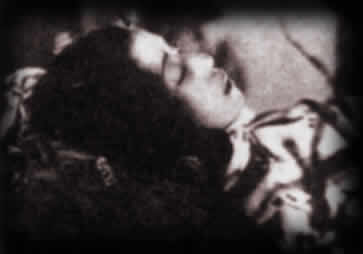
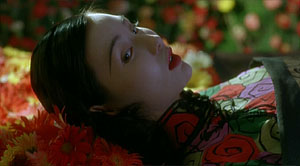
What does it mean to be, as Stanley Kwan’s title has it, Center Stage (1992)? Insofar as it’s possible to deal with the present moment — that is to say, the present pandemic moment — historically, I think that one of the most dubious and objectionable words repeatedly intoned with gravity by TV news commentators and pundits is in fact the word historic. Given an extra spin in some cases by American exceptionalism, even during a period when our President Donald Trump has opted out of many of our accords and treaties, it is used smugly and even narcissistically yet also quite vaguely to describe us and our current experience, as if to distinguish both as being somehow superior to or on a higher plain than those who preceded us or those who will come afterwards — our supposedly ahistoric (and therefore less important) grandparents and grandchildren and what they had or will have to deal with. This is arguably little more than a futile effort to legitimize and glamorize our inertia and helplessness by asserting that the mere fact that we’re alive during an awful period automatically makes us historical. Simply put, it’s our mute suffering that allegedly brings significance to our troubled times, not our existential decisions.
How we define ourselves in relation to the historical past necessarily implies a chosen moral position. Whether the movie happens to be Song of the South (H. Foster and W. Jackson, 1946), Empire of the Sun (S. Spielberg, 1987), Schindler’s List (S. Spielberg, 1993), or Titanic (J. Cameron, 1997), the streamlined route into history starts with the clichéd archetypes of a particular place and time and never strays too far from them for fear of challenging the audience. If you give viewers what they think they already know and continue to flatter them for the possession of their limited knowledge, they can be shuttled through the specifics of the plot as easily as through the key points in a theme park ride. The way this simplifying process entails mental shrinkage — whatever the size of the sets happens to be — is literalized in the design of Disneyland’s Main Street, U.S.A., a nostalgic site where every brick, shingle, and gas lamp, by prefigured design, is five-eighths normal size. As Walt Disney himself put it, this approach makes “the street a toy (…) Besides, people like to think their world is somehow more grown-up than Papa’s was” (Disney quoted in Schickel, 1968:323). The same principle is followed in animated cartoons when aerial locations are conflated with maps, as in the opening shot of Florida in the Disney Dumbo, or in the various evocations of South America in another Disney feature, Saludos Amigos.


By way of contrast, consider Richard Linklater’s way of dressing his sets (with the help of production designer Catherine Hardwicke) and his actors (with costume designer Shelley Komarov) in The Newton Boys (1998), arguably his most underrated and misunderstood film. The movie expresses and generates a sustained curiosity about and fascination with the way streets, clothes, hotel lobbies and bedrooms, banks, storefronts, speakeasies, cars, trains, houses, oil wells, and bathtubs looked in the late 1910s and early 1920s. Such details as an early passing street scene of three little girls performing for the Baptist Orphans Relief Fund, an array of magazines at a cigar stand, and a weathered and tattered Wild West show that the gang briefly visits illustrate the sort of intricate filigree at which the movie excels. These moments also invariably stop the storytelling dead in its tracks (which is where and how the misunderstandings begin), inviting viewers to climb inside the given spaces and roam or swim around in them with a child’s random curiosity. Contrary to Disney’s reductions, the past is made to seem bigger, even more vast and unmanageable, than the present—impossible to navigate, a dreamlike space to get lost in—and the same principle is at work throughout Kwan’s Center Stage. From this standpoint, it might be argued that the more radically contemplative It’s Impossible to Learn to Plow by Reading Books (1988) represents Linklater’s art at its purest, however alienating it might be to conventional audience expectations. But because the real story of The Newton Boys is the kind of ambience, personality, and feelings that blossom out of a milieu and the taste of these qualities when you roll them around on your tongue, the relative absence of Disney-Spielberg-Cameron mechanics is more gain than loss, even though this implies and even necessitates both a gain in the creative and exploratory activity of the viewer and a corresponding loss in acquiescing passively to a preset narrative itinerary.
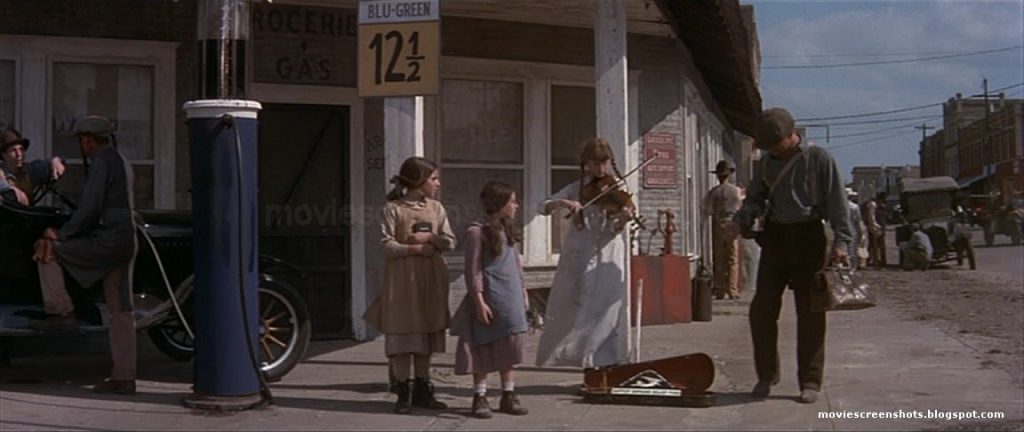
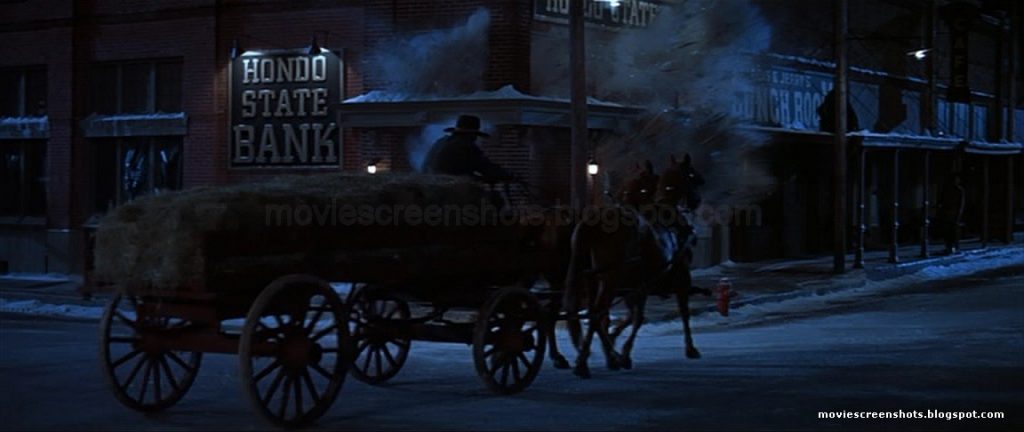
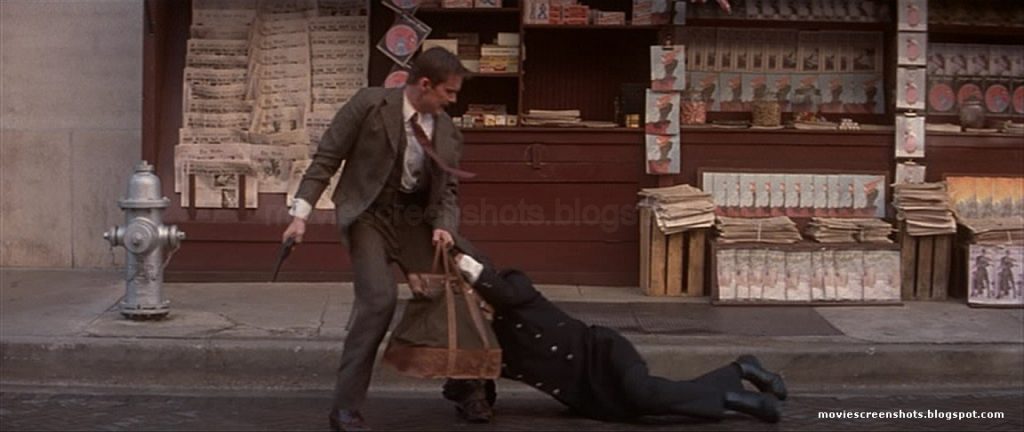
Clearly a major part of the difference is syntactical—the difference between regarding a shot as a declarative statement and viewing it as an open-ended question without any predetermined answer. Thus a major part of the historical achievement of Center Stage—scripted by a Chinese film historian and critic based in Taipei, Peggy Chiao, and directed in Hong Kong by Stanley Kwan—is outlining some of the disorienting characteristics of a labyrinth rather than the more comforting characteristics of a toy. And because every true education begins with recognizing and acknowledging our ignorance, Center Stage starts its lesson by teaching us that history is precisely what eludes our grasp whenever we try to approach the mystery of a silent film actress Ruan Lingyu whose funeral is said to have topped Rudolph Valentino’s in terms of audience turnout. The social and political significance of many of Ruan Lingyu’s late features and the victimized and/or resolute characters she plays in them clearly helped to inspire this response, which few of us are likely to know much about today. Indeed, we may know even less about why Ruan committed suicide at the end of 154 minutes than we knew before we started—apart from one memorable line in her alleged suicide note, which may have been forged and planted by Chang Ta-min: “Gossip is a fearful thing.” Yet knowing something about our ignorance is a major first step. The fact that Kwan keeps juxtaposing seductive color and camera movements in the present with inert black and white photographs and scratchy found footage from the past repeatedly demonstrates that the emotions and the beauty we find in each sphere and how we might describe them are never remotely the same, and the discontinuities continue to trip us up. We have to keep reinventing ourselves as spectators as often as Chiao, Kwan, and actress Maggie Cheung keep reinventing Ruan.
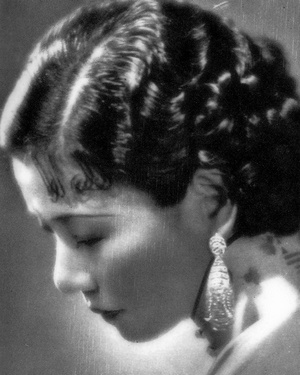
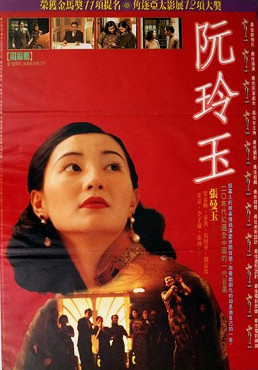
Having attended this film’s world premiere at the Golden Horse Film Festival in Taipei in 1991—immediately after serving in that city as the only western member of the Asian Pacific Film Festival’s jury, which was headed by Peggy Chiao—I can testify that the film elicited a mixed response from my fellow jurors that was subsequently replicated by the reactions of various colleagues back in the U.S. (One of the most prominent and respected of these ignored Center Stage in his book on Hong Kong cinema because, according to him, Stanley Kwan “couldn’t direct his way out of a paper bag”—a curiously myopic judgment that, quite apart from ignoring the achievement and importance of Cheung, seemed on principle to limit the art of Hong Kong film direction to the manufacture of action thrills.)
If Kwan’s approach to the life and death of silent film actress Ruan Lingyu (1910-1935), sometimes labeled the Chinese Greta Garbo, resembles that of any American filmmaker other than Linklater, this is clearly that of George Cukor—another gay film director especially interested in the ways that actresses such as Garbo, Judy Garland, Ava Gardner, Katherine Hepburn, and Judy Holliday and their characters viewed themselves, and one who also ran afoul of industry norms regarding both gender [1] and genre when he made his remarkably transgressive Sylvia Scarlett (1935), which oscillates between heterosexual and homosexual norms as suddenly and as provocatively as it moves between tragic melodrama and slapstick, anticipating some of the emotional subversions of such French New Wave features as Tirez sur le pianiste (F. Truffaut, 1960) and Bande à part (J. L. Godard, 1964) as well as their commercial rejections. (The uneasy commercial reception of Kwan’s film can be gauged by the fact that it boasts no less than three titles — Center Stage, Actress, Ruan Lingyu—in contrast to the two titles apiece assigned to such brilliant box office flops as Cy Endfield’s The Sound of Fury/Come and Get Me! [1950] and Billy Wilder’s Ace in the Hole/The Big Carnival [1951].)
Center Stage begins with a series of stills from diverse genre films, most or all of them lost, in which Ruan Lingyu, age 16, appeared in casual roles, as described by Kwan in voiceover. Sometimes the camera pans across a still to settle on Ruan; the last time it does this, as Kwan is saying that “only after joining [the Lianhua film studio in Shanghai] in 1929 did she have a chance to be in serious films,” there’s a rhyming match cut to Cheung in color, first responding, “We share similar fates, then?” and then laughing at her thought.
The fact that Cheung—mainly known then for her comic action roles and thus an unlikely stand-in for tragic diva Ruan Lingyu (as well as a seemingly dubious last-minute replacement for the less lightweight Mainland actress Anita Mui)—wound up winning best actress prizes in Taipei, Berlin, and Chicago for this role testifies to the effectiveness of casting her as an legendary actress to whom she bore little resemblance. It can arguably be described as a Brechtian performance insofar as it follows the Brechtian injunction that the actor should be seen to be quoting rather than embodying a given character. Indeed, as she’s the first one to point this out, her resemblance to Ruan is existential in relation to their respective careers more than physical, emotional, or temperamental, and the lack of any close fit allows the viewer a far greater imaginative freedom in trying to figure out who the real Ruan Lingyu was than any actual resemblance would. (I have argued elsewhere that a similar mismatch benefits Clint Eastwood’s performance as John Huston in White Hunter, Black Heart [1990].) Mentioning Ruan’s suicide, Kwan then asks Cheung if she’d like to be remembered half a century later, as Ruan was, and Cheung’s guarded answer—appearing just before the film’s opening title—clearly seeks to clarify the differences rather than the similarities. (Later in the film, Kwan will ask similar questions to other actors in his film, and interview one of Ruan’s surviving fellow actresses, now in her 70s, while the actress playing her in her 20s watches; we also see Kwan’s filming of Sun Yu, one of Ruan’s directors, in 1990, shortly before his death at age 91.)
We proceed next to a fictional scene in a misty 1929 men’s bathhouse in Shanghai where Sun Yu and others discuss casting Ruan in virtuous as well as bad women roles, and going to Peking for the snow scenes in the upcoming Reminiscences of Peking (1930), in which she’ll play both a prostitute and her own mother in a double role, before casting and filming her as a chaste songstress in Wayside Flowers (1930). We then proceed directly to (imagined) Peking studio shoots for Sun Yu’s Reminiscences of Peking and Wayside Flowers, which opening titles in both cases inform us are lost films (“Film no longer available”) before we even see any of the scenes being played and shot in color. Although what we plainly are seeing, stylistically speaking, in the first shoot is Cheung acting in what appears to be a dialogue-heavy Kwan talkie, these scenes are followed first by brief unidentified clips from Ruan films (which were all silent), then a conversation in front of a mirror, also in black and white, between Kwan and Cheung discussing Ruan’s performances and her real-life relationships with Chang Ta-min and Tang Chi-shan. (Chang was a compulsive gambler from a wealthy family with declining fortunes whom Ruan became involved with at the age of 16 and later supported with her acting salary until she left him in 1933 and began living with tea tycoon Tang Chi-shan. In 1935, Chang took her to court for reparations, leading to a nasty scandal in the tabloids that is commonly cited as a major cause of her suicide.)
The filming of hypothetical scenes from lost silent films in color followed by brief actual clips and then a present-day conversation in black and white are all part of the same enterprise—to reference the unknowable without presuming to fill in the blanks, only to make guesses that are meant to be perceived only as guesses, not as authentic or legitimate replacements for lost materials. In short, making us aware in these gaps as gaps becomes a central part of the film’s honesty, refuting the perennial myth that capitalism always has a happy ending whereby lost films are always eventually found (even though it’s worth reporting that according to Wikipedia, Ruan’s lost 1931 film Love and Duty, directed by Bu Wancang, was discovered in Uruguay in 1994.)[2]
César Ustarroz, the editor of Found Footage Magazine, has alerted me to Rita Tse’s 26-minute Canadian found footage work New Woman (2017), which borrows both title and images from Ruan’s penultimate 1935 feature, an experimental work I have only been able to sample. César has also reminded me of Wong Kar-wai’s rapturous found footage film Hua yang de nan Hua (Years Like Flowers, 2000), dedicated “to those we remember fondly” and accompanied by what we know in the West as the “Happy Birthday” song, offers an explosive fusillade of glimpses of silent Chinese film actresses, an anthology so rich in evocations and promises that it makes one want to dive into silent Chinese cinema and spend several days there.
Indeed, moving back and forth between conventional biopic and deconstructions of that form—meanwhile intermixing essayistic queries and speculations about unsolved mysteries and lost films, with every title declaring “Film no longer available” serving as a separate mournful tombstone—Center Stage (a title of positioning) or Actress (a title of generic subject) or Ruan Lingyu (a title of actual subject) eludes final definition by sliding between all three of these provisional identities, obliging us to function successively or alternately as different kinds of spectators as a consequence. What remains constant, confirming Kwan’s affinity with Cukor (and also to Kar-wai), is a worshipful attitude towards both Ruan and Cheung, making the film register as a monument to both women, even though they have little in common with one another.
When we watch a basketball game being played on the Lianhua studio backlot, with a violinist furnishing musical accompaniment and two-dimensional, abstract black-and-white skylines lurking behind them, we aren’t watching a film being shot, yet the elements of such a scene are nonetheless present. When we watch Kwan recreate a scene with Ruan from Night in the City (1933), it’s both exciting to learn that she starred in the first feature of Fei Mu, who would go on to direct Spring in a Small Town 15 years later, and frustrating to learn that all of the films she made with Fei Mu are lost. And when Kwan later goes further and first shows Cheung’s Ruan being directed and rehearsing before playing a scene in The Goddess and then cuts directly to the actual clip of that scene, one feels that what he’s actually filming and showing is the vast discrepancy between the two—a fissure or crater that contains only us. Maybe this is what the American academic meant when he said that Kwan couldn’t “direct his way out of a paper bag”. Whether this is an inability or a refusal to satisfy our curiosity about what continues to be missing is irrelevant. Even if what we see is exquisite—beautifully lit and framed, suggestively and seductively designed and upholstered—we’re constantly reminded in numerous ways that it can’t replace the missing pieces in Ruan’s filmography or her milieu. Either way, by choice or by default, the absences that remain and their endless, infinite reaches become the story that Kwan and Chiao have to tell. Whatever occupies “center stage” finally qualifies as a form of emptiness that Chiao, Kwan, Cheung (and, to a lesser extent, Ruan herself, in fleeting clips) and their audiences are obliged to fill.
And whatever Kwan’s intentions, the way that he lingers over his own filming of Cheung’s/Ruan’s deathbed for a good seven minutes of starting and stopping before the final credits spells out this stylish emptiness. As a final speech puts it while Cheung is being placed on her bed and her covers are being arranged and rearranged and the camera drifts restlessly around her prone body: “Her private life and hardship are hardly known. None of her colleagues helped her in her lawsuit. A sentimental girl like her must’ve taken a pessimistic view of life. She never turned herself into a cold and shrewd woman. She took a serious view of life. When she got half-drunk she’d ask her friends, “Can I be considered good?’” Kwan signals the start of a third take and the moment of mourning is stretched out further. Then we drift around the ruins of Lienhua Studio, initially as Kwan imagines it in color, then as he pans across the actual site in black-and-white in 1991. Then he returns to the mourning and Ruan’s deathbed in color, where he detects Cheung breathing and says, “Cut.” Another take begins, a closeup of Cheung that lasts an eternity. “Cut.” Cheung breathes again. Cut to a motionless black and white photograph of the real Ruan on her deathbed, viewed from the same angle. Her name and dates appear superimposed, and then the film’s credits roll.
ENDNOTES
[1] Kwan’s excellent documentary Yang + Yin: Gender in Chinese Cinema (1998) lamentably excludes silent cinema, but it could be argued that Center Stage at least partially makes up for this lack.
[2] It’s worth adding that four of Ruan’s other films—Bu Wancang’s The Peach Girl (1931), Sun Yu’s Little Toys (1933), Wu Yonggang’s The Goddess (1934, widely regarded as her surviving masterpiece), and Cai Chusheng’s New Women (1935)—are all currently available on YouTube with English subtitles. Another useful resource is Richard J. Meyer’s book Ruan Ling-Yu: The Goddess of Shanghai (Hong Kong University Press, 2005), published with a DVD of The Goddess (also with English subtitles, as well as an audio commentary and piano score).
————————–
BIBLIOGRAPHY
Schickel, Richard (1968). The Disney Version: The Life, Times, Art and Commerce of Walt Disney. New York: Simon & Schuster.
